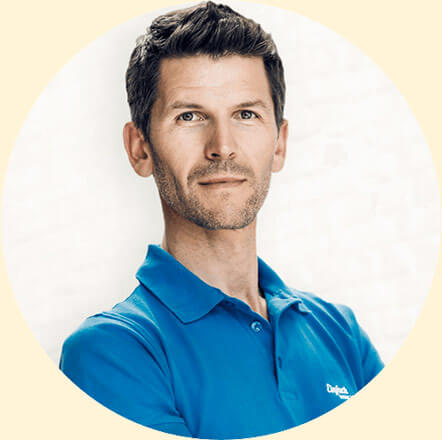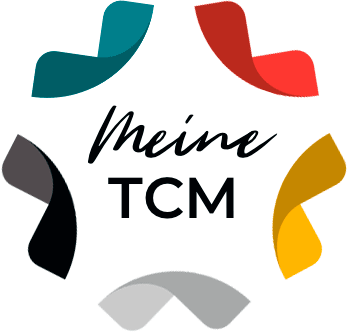
Qi Gong exercises explained
Exercise description
Starting position is the shoulder to hip width qigong stance. Breathe in and straighten up internally. That is, you feel the connection of your head with the sky above the "Heavenly fun" (= highest point of the head).
With the exhale sink down and now feel your Rooting with the ground. With the next inhalation, raise your interlaced fingers above your head. The palms of your hands point to the sky.
Exhaling relax your shoulder girdle and bend your elbows slightly. Now swing the rainbow (your arms) to the left with the inhale. In this movement, your right knee bends. This means that your body weight is now 80 % on your right leg.
Exhaling, come back to the center. Inhale one more time and move your arms to the right. Now your left leg bends and takes most of the weight load of the body. Then exhale and come back to the center. Now repeat the movement from the front.
Frequently asked questions
Does it matter which leg is bent?
From experience I know that many qigong practitioners have problems bending the right leg. But this is quite important for an optimal effect of the exercise. When the upper body is moved to the left, the lower part of the body (the pelvis) must move in the opposite direction, to the right. Only in this way can we maintain a stable center.
What do I do if the exercise is very strenuous in the shoulders?
Just keep practicing! But of course adapted to your personal situation. That is, you do only so many repetitions that your shoulder and neck area is not tense. Because we don't want to bring even more tension into this already stressed part of the body.
You may well have to lower your arms again after 3-4 repetitions in the beginning. And that's perfectly fine. Over time, you'll manage to keep your arms above your head for longer, which will generally have a positive effect on your shoulder girdle and your posture.

Pro tip from Wolfgang
Stretch your arms up really well at the beginning to straighten the body internally. Then when the shoulder girdle sinks, try to keep this inner length in your body axis (spine). The idea of the "sky string" stretching you upward will help you keep the inner erection.
Qi Gong exercise waving the rainbow - element wood
Most common errors
- The wrong leg is bent.
- The hands are not really vertical above the head at the beginning, although that would be possible in principle from the mobility.
- The shoulder blades are raised during the movement and not at the lowest possible position.
Training tips
- As regularly as possible the Qi Gong exercise "Support sky" practice as preparation.
- This exercise should definitely be performed in front of a mirror.
- Another way of self-monitoring is to film yourself with your smartphone and thereby identify errors in execution.
Assistance
What can you do if the exercise is too difficult?
If the exercise causes problems, then you simply omit the footwork at the beginning and concentrate on the lateral movement of the upper body. When this is well internalized, you can start by shifting the weight to one leg and then to the other. If this also works fluidly, then you combine the movement of the upper body and legs.





































